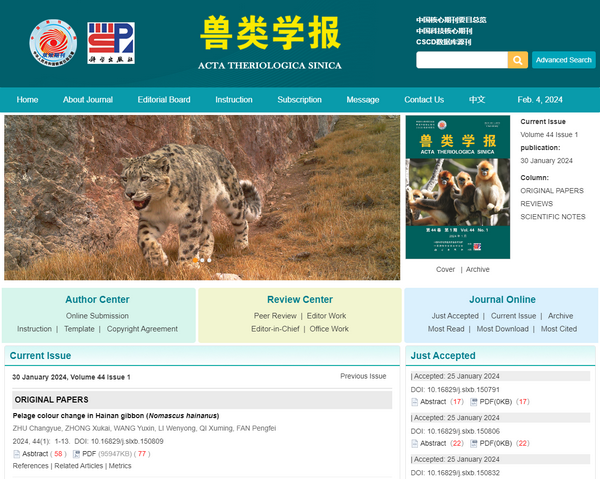
Acta Theriologica Sinica is a Chinese Mammalogy journal founded in 1981 with international interests.It publishes original research papers, scientific notes, and reviews of all fields of mammalogy. It also publishes problem discussions, book reviews, and academic information.
Editor-in-Chief: WANG Dehua
Associate Editors: Zhang Yanming, Liu Dingzhen, Yang Guang, Bian Jianghui, Li Ming, Jiang Xuelong, Luo Xiaoyan
Mammalian subjects include: taxonomy and faunistics, ecology, physiology, biochemistry, morphology, molecule, anatomy, and rodent control. papers on investigation, protection and utilization, feeding and reproduction of endangered and economic mammals are especially welcome.
- Special emphasisis focused on the ecology of endangered mammals such as giant panda, golden monkey, Baiji Dolphin, ect.
- Published Quarterly in Chinese and all papers have English abstracts with English Explanatory tables and Figures. Papers written in English are welcome.
- Exchanged or subscribed in over 30 countries and areas
- Indexed by: Biological Abstracts (U.S.A.), Zoological Record (U.K.), Biological Abstracts (Russia), Bilolgical Abstracts (Chinese), and other abstracting journals.
Manuscripts and letters to the editorial office should be addressed to:
Editorial Board of Acta Theriologica Sinica
Northwest Plateau Institute of Biology
The ChineseAcademy of Sciences
59 Xiguan Street, Xining, Qinghai 810008, China
http://www.mammal.cn/
E-mail: slxb@nwipb.cas.cn
